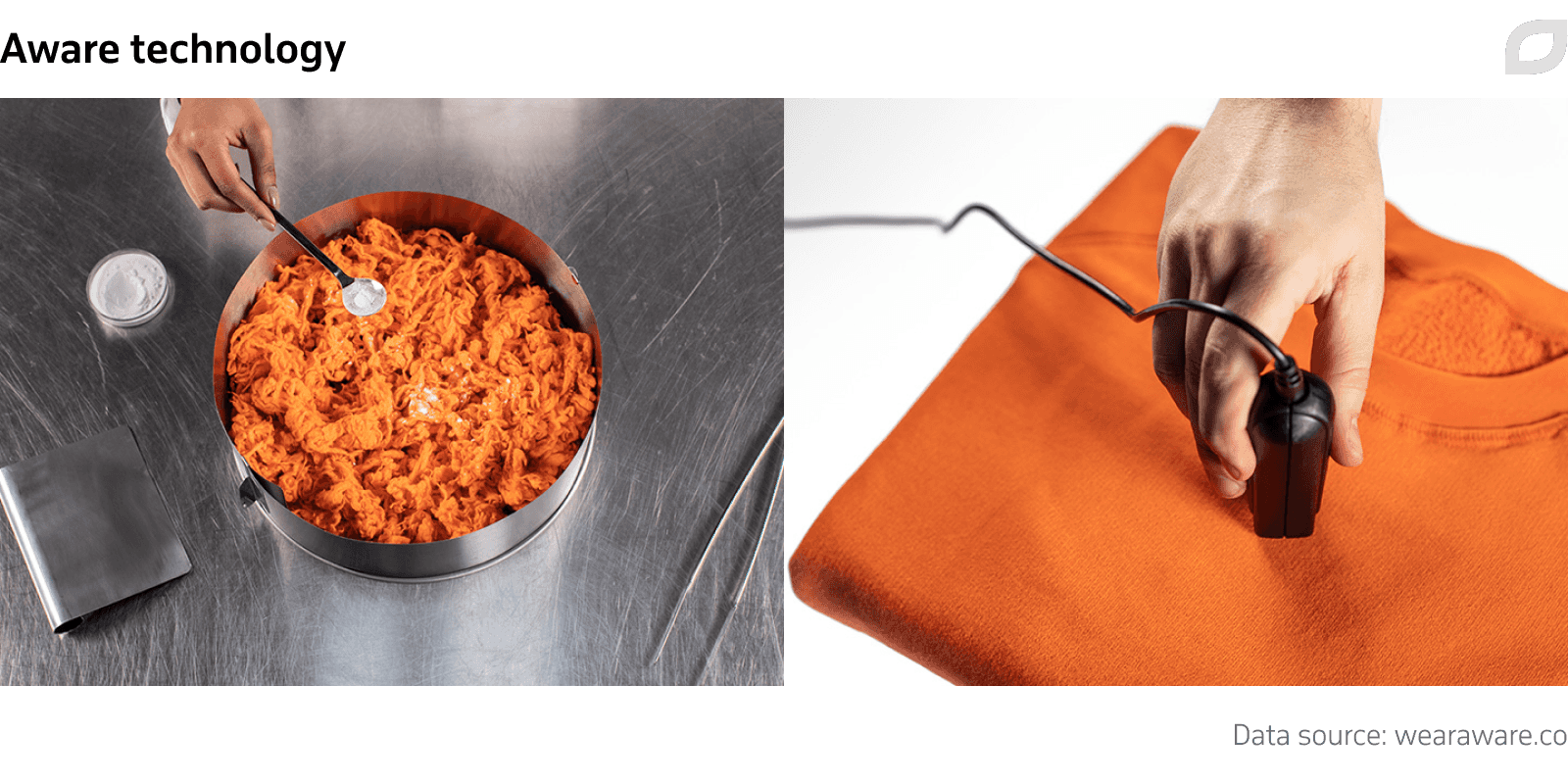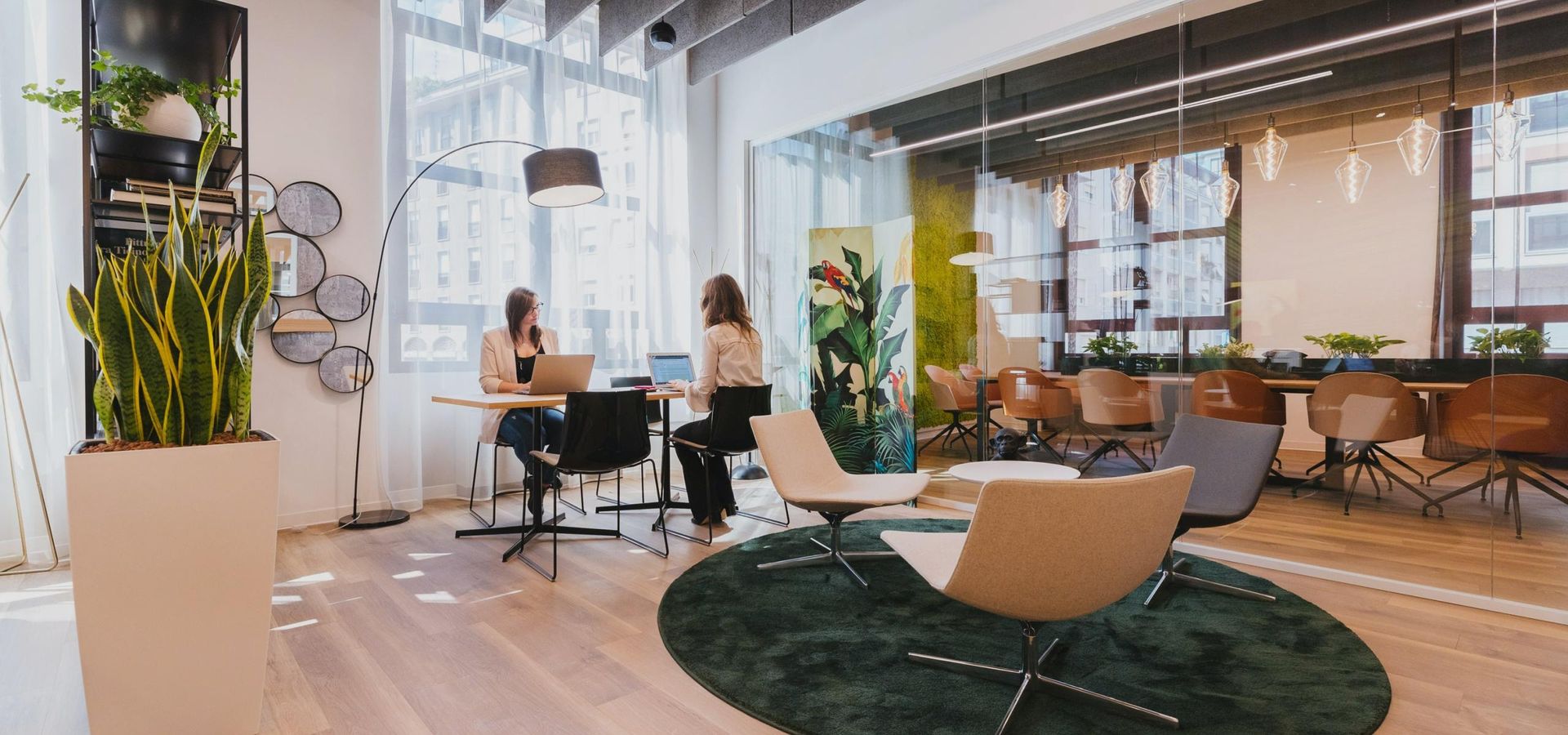According to the latest report by Market Reports World, the global blockchain market in retail is predicted to grow from $123.1 million in 2020 to $1644.4 million in 2027 at a staggering CARG of 44.5%. Given the potential of blockchain to address many current issues that retailers face, the rising demand for blockchain consulting is rather unsurprising. In this article, we will discuss how exactly blockchain in retail can help companies to improve supply chain visibility, combat counterfeiting, enhance loyalty programs, and improve operational efficiency overall.
What is blockchain in retail?
Blockchain is a type of distributed ledger that allows a network of participants to securely record, store and share information. Blockchain-based data sharing is peer-to-peer, implying that there is no central authority controlling the ledger.
In a nutshell, blockchain in retail has immense potential because of its ability to increase transparency and trust between retailers, consumers, supply chain participants, and payment gateways. Blockchain allows all retail network participants to observe what is happening in the system in near real-time without granting control to any specific party.
4 use cases of blockchain in retail
Now let’s figure out some of the most potent use cases of blockchain in retail.
1. Improving traceability
In a conventional supply chain, there is no reliable system for tracking the provenance of a product. While some retail companies use barcode systems to trace goods, they have proven to be rather unreliable because of their centralized nature, which makes them susceptible to fraud and cyberattacks.
Blockchain-based systems for product traceability, on the contrary, are decentralized, which allows companies to more securely trace and authenticate a product.
One crucial component of an effective blockchain-based tracking system is smart tags, which can track a product’s location in near real-time. Smart tags can take different forms:
- Quick response (QR) codes that can be read by any modern smartphone and tablet.
- Radio frequency identification (RFID) tags that can be read by a special device that emits radio waves and receives a signal back from an RFID tag. The main advantage of RFID is that readers can scan multiple tags simultaneously and at distances up to one km.
-
Near-field communication (NFC) chips that are similar to RFID, but operate at closer range, which is a desired attribute in some cases.
Smart tags can be assigned to virtually any product, which essentially tokenizes it. All blockchain participants also have unique identifiers (think about them as signatures), which they use to sign transactions of a given token. This way, it becomes possible to trace back the product’s journey.
The architecture of such a traceability system varies based on a specific use case and can address many retailers’ pain points, which we describe below.
2. Combating counterfeiting
In the retail context, counterfeiting has an especially negative impact, leading to product recalls, brand reputation damage, a decrease in customer trust, and, ultimately, significant monetary losses. Importantly, counterfeit products can also be a matter of life and death. For example, according to the National Insurance Crime Bureau (NICB), counterfeit airbags are a growing concern in the US. Likewise, Gartner claims that over 60% of olive oil is counterfeit.
Blockchain in retail can help companies combat counterfeiting by reliably identifying the proof-of-origin of a product. Blockchain can be used as a secure tracking system that provides visibility throughout the entire supply chain, from the extraction of raw materials to the shipment of a product to the end-consumer.
To illustrate how exactly blockchain in retail prevents counterfeiting, let’s suppose that a criminal has managed to duplicate an RFID tag. With a conventional system in place, there is practically no way to differentiate between genuine and fake tags. However, given that a tag contains information about the endpoint of the product journey, which can’t be altered, spotting counterfeit products becomes easy.
For example, let’s again imagine that a customer bought an expensive ring with an assigned smart tag. By scanning a tag, the customer can reveal that the end point of that ring was a specific branch of Tiffany. If he or she bought that ring from somewhere else, the ring is certainly fake.
The same logic can be applied to the secondary market since any buyer can register the ownership of a given product on the blockchain. When he or she decides to sell this product, a second buyer can also record their ownership of the product on the blockchain. In a rather distant future where blockchain in retail becomes widespread, this will incentivize all buyers to register on the ledger since unregistered ownership will most likely decrease the resale value of products.
Blockchain’s ability to verify product provenance is now getting recognized by respective regulatory bodies. For example, the FDA New Era of Smarter Food initiative aims to prevent food illness outbreaks by implementing blockchain and other innovative technologies like AI.
3. Ensuring food safety with IoT and blockchain
From local grocery stores to multinational food retail chains to restaurants, every business operating in the food industry is constantly trying to find a balance between preventing economic losses from spoiled food and ensuring food safety. Food safety has been a continuous concern globally for many years and according to a recent report by CDC, there are still about 48 million cases of foodborne illness annually in the US - the equivalent of one in six being sick from spoiled food.
Crucially, trading off economic losses for increasing food safety is also a double-edged sword. Food waste is the second biggest contributor to landfill growth. Landfills, in their turn, are the third biggest contributor to methane emissions, which is one of the main causes of global warming. What is more, the US economy loses $165 billion annually because of food waste.
While the FDA’s Hazard Analysis and Critical Control Point (HACCP) system is in place to tackle these growing concerns, the compliance reporting is manual, increasingly cumbersome, and susceptible to fraud. With the help of IoT and blockchain, it’s possible to automate food condition monitoring, significantly increase its accuracy, and streamline regulatory compliance.
So, how exactly can IoT and blockchain help?
The HACCP framework defines various environmental limits for every food type that businesses operating in the food industry have to adhere to. Let’s take a butcher’s shop as an example. The blockchain-based, IoT-enabled framework could work as follows:
-
An IoT sensor installed in the refrigerator detects that the required temperature for turkey storage exceeds the HACCP-defined limit.
-
An employee gets a notification about the issue on their tablet or smartphone.
-
Based on HACCP-prescribed guidelines, an employee resolves the issue (lowers the refrigerator temperature, for example)
-
As soon as the temperature is lowered, the platform verifies that the relevant measures were taken and records this information on the blockchain.
However, both blockchain and IoT can be integrated at much earlier stages of the supply chain. Blockchain can be used as a powerful tool that can provide both businesses and consumers with reliable information about food safety and its origin, recording every touch point through the entire journey from producer to consumer.
IoT sensors allow retail organizations to collect various types of environmental information including food temperature and pressure, and instantly share this data across the entire blockchain network.
This technology brings multiple advantages. First, it significantly increases customer trust, as consumers can check where exactly the food was sourced from and how it was produced by scanning a QR code. Second, if food gets contaminated, blockchain can pinpoint at what stage of the retail supply chain it happened. Third, based on the environmental data from fulfillment centers, organizations can more accurately predict when a food product will spoil and take preemptive measures.
4. Enhancing loyalty programs
According to a study by Oracle, 71% of US consumers are active in at least one to five loyalty programs per month and 56% have at least one loyalty rewards program app on their phone. Most importantly, 62% of consumers are willing to choose one brand over another because of its loyalty program. Undoubtedly, this makes loyalty programs an important engagement tool in every retailer’s arsenal.
At the same time, loyalty programs are plagued with inefficiencies and don’t always realize their full potential. For instance, consumers often don’t redeem their rewards, which is considered a liability in retailers’ balance sheets. In many cases, redeeming rewards also takes more time than customers expect, which, paradoxically, can lead to decreased customer loyalty and satisfaction. However, the most significant issue with the current approach is that customers can use their loyalty points only for products of the same brand.
Blockchain implementation can enable retail companies to create a decentralized system where loyalty points can be spent across multiple brands and retail segments. With blockchain in retail, all participants of the loyalty network including brands, loyalty program administrators, and customers can interact in a trustful system while keeping their privacy intact.
Such a blockchain-based, multi-channel network can eliminate many inefficiencies commonly associated with loyalty program management and add new possibilities for the retailers to engage with customers:
-
Customers can now use a single e-wallet for redeeming all their loyalty rewards instead of trying to manage multiple digital accounts and physical loyalty cards.
-
Brands can launch bundled offerings aimed at specific target audiences.
-
Every company participating in the network automatically expands its reach to a bigger customer base.
-
Increased liquidity of loyalty points allows retail companies to write liabilities off of their balance sheets.
-
Loyalty points become traceable and almost impossible to fake.
It’s time to reinvent retail with blockchain
We know how
Real-life examples of blockchain in retail
In the last few years blockchain has been gaining traction among retail organizations, governmental organizations, and policymakers, which led to many theoretical use cases of blockchain in retail being realized in practice. Now let’s see how forward-looking companies applied blockchain in retail to address their specific issues.
1. Walmart
Walmart’s venture into the blockchain landscape is largely unsurprising as the company has always been at the forefront of applying emerging technologies to streamline its supply chain processes.
Walmart Canada used blockchain to tackle possibly the most widespread and persistent problem associated with logistics and transportation – managing enormous amounts of invoices and payments within the network of freight carriers. Every year, Walmart Canada delivers over 500,000 shipments to distribution centers scattered across the country and relies on 70 third-party freight carriers to deliver these goods.
Orchestrating the movement of enormous amounts of products is an extraordinary logistical challenge. Each of the thousands of monthly shipments requires employees to manually collect and enter over 200 data points into each invoice. The sheer amount of manual work required for the movement of goods inevitably leads to data discrepancies and delayed reconciliations. As a result, more than 70% of invoices contained data discrepancies. These supply chain deficiencies largely stemmed from the incompatibility of enterprise systems that Walmart and those 70 freight carriers were using.
To tackle these issues, Walmart Canada joined forces with DLT Labs, a developer of enterprise blockchain solutions. After almost two years of rigorous pilot testing, the permissioned blockchain network, known as DL Freight, went live in 2021. DL Freight now serves as a single source of truth for all network participants where at every step of the process, all data is immutably recorded on the blockchain. After DL freight adoption, only 1% of invoices are disputed, which is 70 times less than prior to adoption.
2. De Beers
De Beers Group is one of the world’s biggest diamond retailers. In the luxury goods and jewelry industries, proving the authenticity of both end-products and source materials is of the highest priority. Nowadays, consumers expect luxury brands to provide reliable and easily verifiable information about product origin. For a new generation of consumers, it’s not only a matter of being confident in their purchasing decisions, but also about playing an active role in social welfare. According to recent research by Bain & Company and AWDC, up to 70% of younger generations consider the impact on the environment and local communities when deciding to purchase diamond jewelry.
De Beers has been testing its proprietary permissioned blockchain-based system Tracr since 2018, and the platform was finally launched at scale in 2022. Currently, one-quarter of De Beers’ products are registered on Tracr. The platform now allows both sightholders (companies that are authorized to make bulk purchases of De Beers’ rough diamonds) and retail organizations to access provenance records of diamonds on a secure and permissioned blockchain. To reliably trace a diamond’s journey through the supply chain, Tracr uses blockchain in combination with AI and IoT.
3. American Express
After realizing the inherent disadvantages of conventional loyalty programs, American Express rolled out the rewards program Plenti, which the company called a ‘loyalty coalition business’. The idea behind Plenti was straightforward – to allow consumers to earn loyalty points at one retailer and redeem them at any other retailer participating in the program.
While the idea was seemingly perfect, just after two years of program inception, partnering merchants started dropping out one by one, foreshadowing the demise of the program. The thing is, consumers rarely fail to legally exploit these loyalty systems. Plenti users accumulated easy-to-collect loyalty points at gas stations and spent them at Macy’s, or at other retailers that had a much wider range of goods on display. Essentially, Plenti’s reward program competed with retailers’ own loyalty programs.
So, the root cause of the problem was in the underlying network, which didn’t allow participants to reach a consensus on how the program should be structured. This is why just one month after Plenti’s end, American Express announced its partnership with Hyperledger to develop a blockchain-based system that lets merchants create custom Membership Rewards programs for American Express cardholders. In short, it enables merchants to tie American Express reward points to their own products however they want it. This is a win-win solution, merchants have control over the types of offers they make and customers get a variety of promotions. Importantly, Hyperledger’s blockchain technology allows merchants to be onboarded within a few weeks, compared to months when using conventional APIs.
4. Carrefour
Carrefour has been a member of IBM Food Trust since 2018, continuously expanding the range of goods recorded on the blockchain. In 2019, Carrefour allowed blockchain-based tracking for 20 product types including chicken, eggs, milk, cheese, and other essential products. Customers can scan a QR code attached to a product and discover detailed information about its origin, including the producer’s name, harvest date, location of cultivation, package date, etc. In 2019, Carrefour revealed that products tracked by blockchain have been generating noticeably more sales.
In 2021, Carrefour expanded the use of blockchain in retail to also trace its exclusive textile products. In 2022, Carrefour became the first retailer to use blockchain with its own branded organic products. Now the whole range of Carrefour Bio products is traced by blockchain, allowing consumers to be more confident in their purchasing decisions.
From a business perspective, Carrefour is getting ahead of its competitors because their blockchain solution significantly increases customer trust. As Carrefour’s blockchain project manager expertly noted, such initiatives create a halo effect. There is a high probability that consumers who trust Carrefour with one type of product will trust it with other types of products as well.
5. P&G and Walgreens
In 2021, a Virginia couple ran a coupon fraud scheme, which led to more than $30 million in losses to a number of retailers in just three years. A few weeks after the story hit the news, P&G and Walgreens adopted CuBE, an anti-counterfeit solution developed by SigmaLedger that specifically targets coupon fraud.
As per the majority of retailers’ guidelines, cashiers shouldn’t question the origin of consumers’ coupons if they are scanned as legitimate. So, fraudulent coupons are often flagged weeks after a transaction takes place.
SigmaLedger’s CuBE connects manufacturers and retail organizations through blockchain and allows retailers to verify coupons’ authenticity at POS, eliminating the possibility of fraud. The technology also significantly reduces the costs associated with coupons being checked at a clearinghouse and catches fraudsters red-handed.
Discuss your blockchain project with Itransition's experts

Blockchain consulting & development
Our blockchain consultants help retail companies to leverage the power of blockchain to increase supply chain visibility and increase operational efficiency overall.
6. Denim Deal
Production of jeans has always posed environmental challenges for retail companies. In general, virgin denim is one of the least sustainable materials on the market. The average pair of jeans requires around 7000 liters of water to produce. This is why Demin Deal is trying to tackle this issue by incorporating 5% of recycled textiles in every pair of jeans produced within the network. Denim Deal is a network of over 40 partners including denim producers, regulatory bodies, and recycling companies aiming to reduce the environmental impact of denim production.
Denim Deal is now using Aware, a traceability technology developed by Circularise, a software development company that provides blockchain-based solutions for the industrial supply chain. Aware is used to prove that the final pair of jeans comprises at least 5% of recycled material. This is how Aware works:
- Traceable microparticles are added to the recycled textile.
- Recycled cotton mixed with Aware’s micro particles takes the form of a token on the blockchain.
- The fabric is used to produce a pair of jeans.
- Aware’s custom hand-held scanner is used to scan tokenized particles in the finished product.
- The availability of particles in a finished product guarantees that it is at least partly made from recycled materials.

Importantly, Aware’s unique particles can be mixed with many different fabrics, allowing various types of clothes and accessories to be traced with blockchain. With Aware, retail companies can be confident that they are contributing to sustainability, while also attracting environmentally-aware consumers to their brands.
Closing thoughts
Whether it’s increasing customer trust and loyalty, improving visibility in the supply chain, enhancing loyalty programs, or combating counterfeiting, blockchain is a catalyst for retail digital transformation. We are now way past the blockchain hype and it’s time for retail organizations to use blockchain to improve business-critical functions and stay ahead of the competition.



